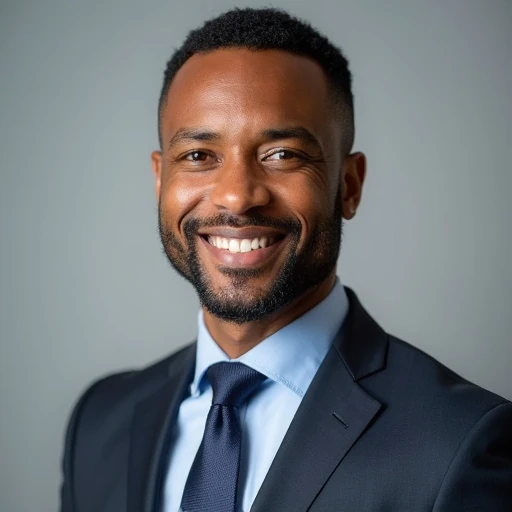The United States Space Force has halted its plan to establish a new Futures Command, an organization intended to guide the service's long-term strategy. According to multiple Pentagon sources, the initiative is no longer moving forward, and officials are now exploring alternative structures to manage future planning and development.
The decision comes after more than a year of public discussion about the command's formation. Now, the service is internally discussing a replacement organization, potentially smaller in scope, to oversee future force design and wargaming efforts.
Key Takeaways
- The plan to create a U.S. Space Force Futures Command has been officially canceled.
- The deactivation of the U.S. Army's own Futures Command influenced this decision.
- A replacement organization, tentatively named "Innovation and Simulation," is under consideration.
- This new entity would likely be built around the existing Space Warfighting and Analysis Center (SWAC).
Cancellation of a Major Initiative
The proposal to create a Space Futures Command, first announced by Chief of Space Operations Gen. Chance Saltzman in February 2024, has been definitively shelved. A Pentagon official, speaking on the condition of anonymity, stated bluntly, "Futures Command is dead."
The command was designed to take a holistic view of the Space Force's needs 10 to 15 years into the future. Its responsibilities would have included defining the requirements for personnel, equipment, operational concepts, and training infrastructure to build a future-ready force.
Initially, the plan was for the command to begin operations by early 2025. It was intended to consolidate several key functions under one umbrella, including a new Concepts and Technologies Center and a Wargaming Center, alongside the pre-existing Space Warfighting and Analysis Center (SWAC).
Influence from the Army's Restructuring
According to another Pentagon source, the "collapse of Army Futures Command" was a significant factor in the Space Force's reassessment. On October 2, the Army deactivated its Futures Command and its Training and Doctrine Command (TRADOC), with plans to merge them into a new organization called the Transformation and Training Command. This move signaled a broader shift in how the military approaches long-term strategic planning commands.
Shifting Priorities and Leadership Views
The momentum behind Space Futures Command slowed following changes in leadership and a strategic re-evaluation. While former Air Force Secretary Frank Kendall had reportedly approved the command's creation and even named Maj. Gen. Dennis Bythewood as its prospective leader, the activation was paused.
This halt was attributed to a desire to re-examine strategies related to "great power competition," particularly with China. The new Air Force Secretary, Troy Meink, expressed a cautious approach to major organizational changes shortly after taking his post.
"I’ve been in the job about four, four-and-a-half months. I wanted to make sure that I had time... I know we’re getting close to making a number of those decisions, and so in the next couple of months, we’ll be rolling with them," Meink said at a press conference in September.
This sentiment suggested that large-scale restructuring plans, including the Futures Command, were under review. Subsequently, Maj. Gen. Bythewood was nominated for a promotion to command Space Forces Space, the service's component to U.S. Space Command, effectively moving him out of the running for the now-canceled command.
A New Proposal: 'Innovation and Simulation'
With the Futures Command concept off the table, internal discussions have shifted toward creating a different kind of organization. Several sources confirm that a new structure, tentatively called Innovation and Simulation, is being considered.
This proposed entity would not be a direct replacement but rather a more focused organization. Its primary role would be to oversee the Space Warfighting and Analysis Center (SWAC), which is responsible for developing force designs for missions like satellite communications and missile warning for the next five to 10 years.
What is SWAC?
The Space Warfighting and Analysis Center (SWAC), created in 2020, is a critical part of the Space Force. It conducts analysis, modeling, and wargaming to determine the most effective and resilient configurations for satellite and ground systems to meet future military needs.
The Innovation and Simulation concept is described by sources as a "super-SWAC." It would integrate SWAC with what one industry source called other small organizational "cats and dogs," consolidating related functions into a single field command or direct reporting unit.
Potential Leadership for the New Organization
There is already speculation within the Pentagon about who might lead this new body. According to two sources, Maj. Gen. Stephen Purdy is a name being discussed. Purdy is currently the acting assistant secretary of the Air Force for space acquisition and innovation.
He is expected to transition from his acting role by January at the latest, which would make him available for a new assignment. This potential appointment, however, remains speculative as the final structure of the new organization has not been decided.
An Uncertain Path Forward
All sources involved have stressed that discussions about a replacement for Futures Command are in the preliminary stages. No formal decisions have been made, and the path forward remains uncertain. The Department of the Air Force has not officially confirmed the cancellation or announced a new plan.
When asked for comment, a Space Force spokesperson stated on October 3 that the Department of the Air Force "is still exploring options and has not made an official decision to stand up Space Futures Command."
The political and budgetary climate in Washington also plays a role. As one industry source noted, this is "not a good year to expand commands/bureaucracy in the Pentagon." The same source estimated there is a 50/50 chance that the Space Force moves forward with any new command structure in the near future. It also remains possible that senior Defense Department officials could intervene and reverse the decision, reviving the original Futures Command concept.





